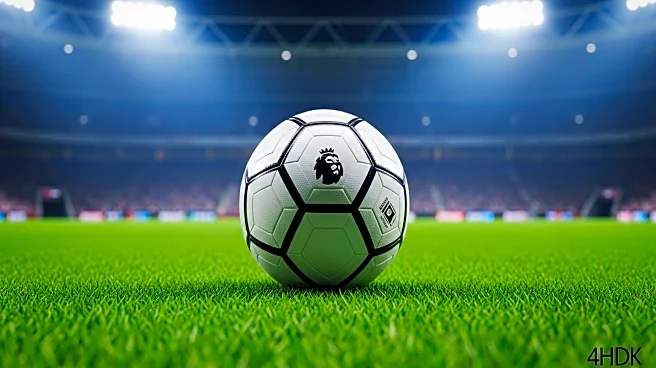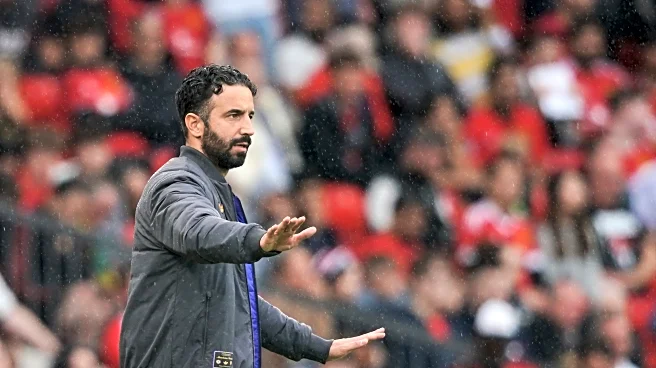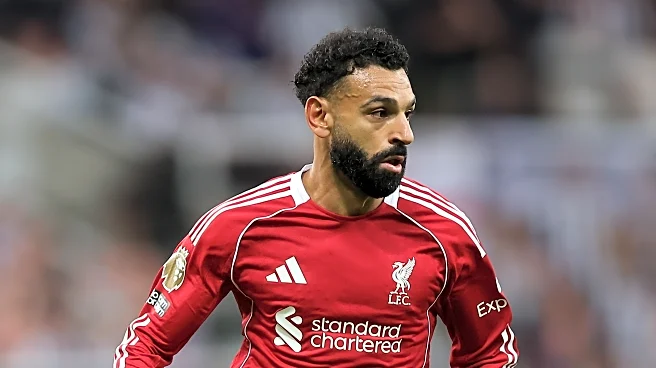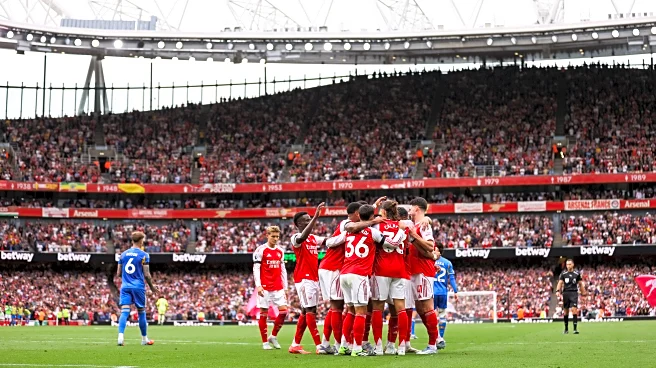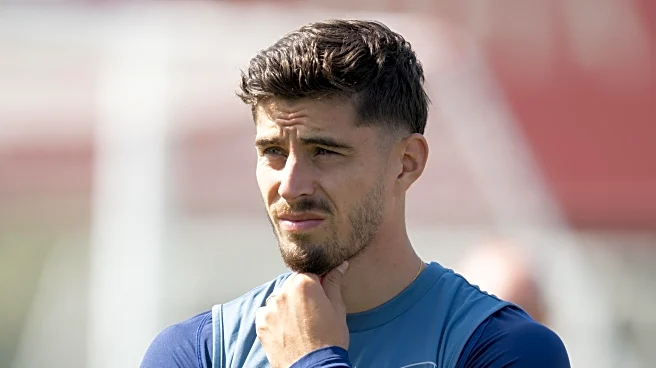What's Happening?
The Premier League has seen a remarkable influx of young talent, with players like Rio Ngumoha and Max Dowman making headlines for their performances. Ngumoha, who recently turned 17, scored a decisive goal for Liverpool against Newcastle, while Dowman, at just 15 years old, won a penalty for Arsenal on his debut. These young players are breaking barriers in a league known for its physical demands, challenging older professionals who must adapt to their presence on the field. Historical examples include James Milner and Wayne Rooney, who set records as teenagers, showcasing the evolving nature of the league where age is becoming less of a barrier to entry.
Why It's Important?
The emergence of young players in the Premier League highlights a shift in the sport's dynamics, where age is increasingly seen as less of a hindrance to success. This trend could influence team strategies, scouting, and player development programs, as clubs may invest more in nurturing young talent. It also poses challenges for veteran players who must adapt to the pace and skill of younger opponents. The success of these youngsters could inspire more clubs to focus on youth development, potentially altering the competitive landscape of the league and impacting transfer market dynamics.
What's Next?
As these young players continue to make their mark, clubs may adjust their training and development strategies to accommodate and capitalize on youthful talent. The Premier League could see an increase in younger players being integrated into first teams, prompting discussions on age-related policies and player welfare. Stakeholders, including coaches and sports analysts, will likely monitor these developments closely to assess their long-term impact on the league's competitiveness and player career trajectories.
Beyond the Headlines
The rise of young players in the Premier League may have broader cultural implications, challenging traditional views on age and experience in professional sports. It could lead to discussions on the ethical considerations of exposing young athletes to high-pressure environments and the responsibilities of clubs in safeguarding their well-being. Additionally, this trend might influence youth sports participation rates, as aspiring athletes see more opportunities for early career advancement.
